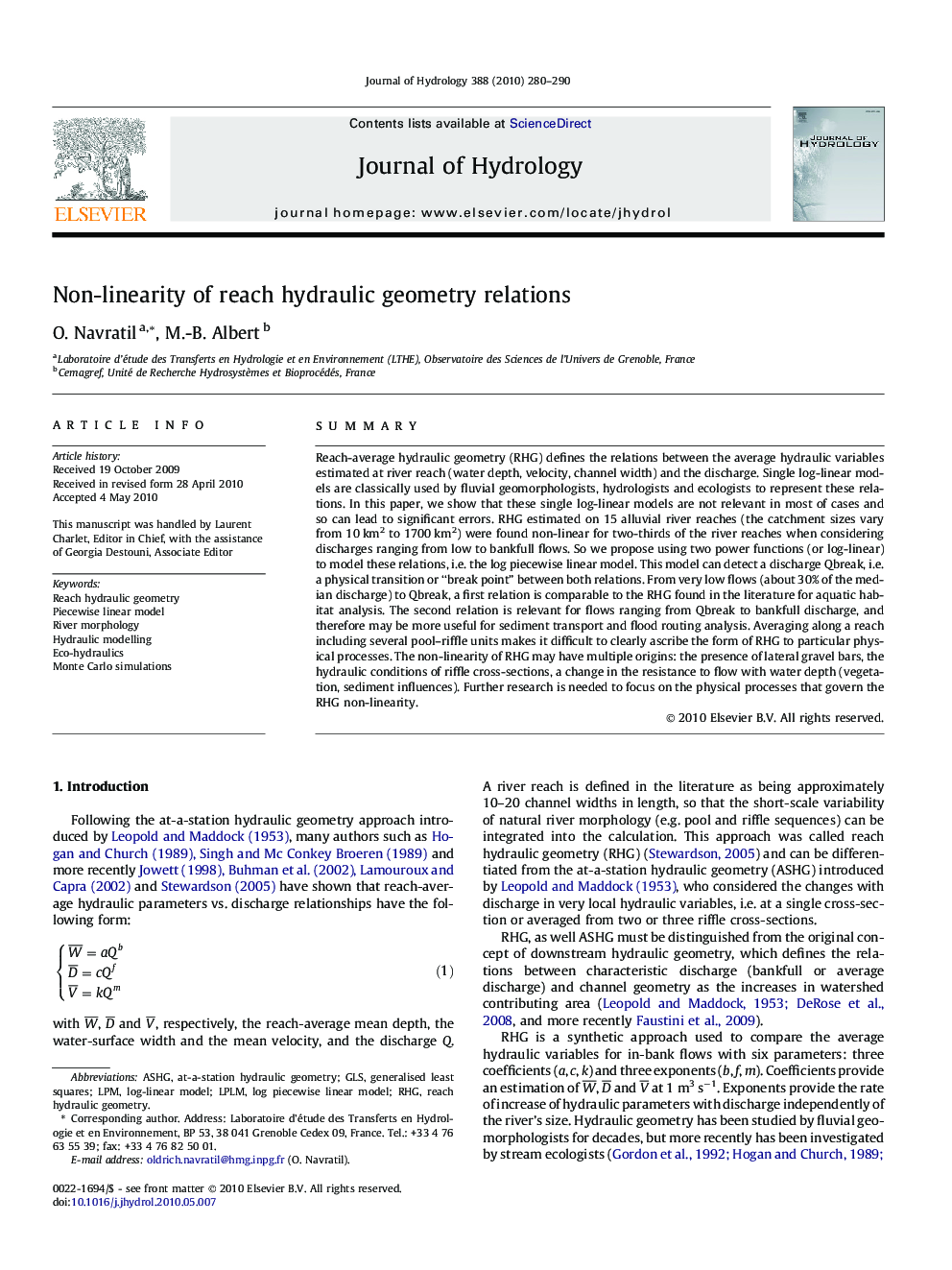| Article ID | Journal | Published Year | Pages | File Type |
|---|---|---|---|---|
| 4578163 | Journal of Hydrology | 2010 | 11 Pages |
SummaryReach-average hydraulic geometry (RHG) defines the relations between the average hydraulic variables estimated at river reach (water depth, velocity, channel width) and the discharge. Single log-linear models are classically used by fluvial geomorphologists, hydrologists and ecologists to represent these relations. In this paper, we show that these single log-linear models are not relevant in most of cases and so can lead to significant errors. RHG estimated on 15 alluvial river reaches (the catchment sizes vary from 10 km2 to 1700 km2) were found non-linear for two-thirds of the river reaches when considering discharges ranging from low to bankfull flows. So we propose using two power functions (or log-linear) to model these relations, i.e. the log piecewise linear model. This model can detect a discharge Qbreak, i.e. a physical transition or “break point” between both relations. From very low flows (about 30% of the median discharge) to Qbreak, a first relation is comparable to the RHG found in the literature for aquatic habitat analysis. The second relation is relevant for flows ranging from Qbreak to bankfull discharge, and therefore may be more useful for sediment transport and flood routing analysis. Averaging along a reach including several pool–riffle units makes it difficult to clearly ascribe the form of RHG to particular physical processes. The non-linearity of RHG may have multiple origins: the presence of lateral gravel bars, the hydraulic conditions of riffle cross-sections, a change in the resistance to flow with water depth (vegetation, sediment influences). Further research is needed to focus on the physical processes that govern the RHG non-linearity.
